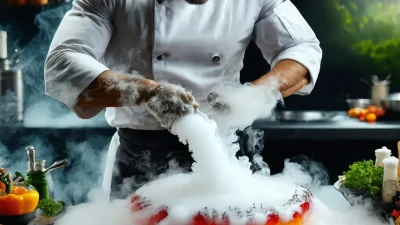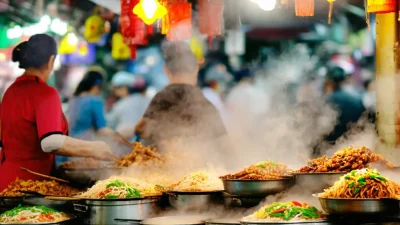Mastering the Art of Sous Vide Cooking
Sous vide cooking has revolutionized the culinary world, offering a method that combines precision with unparalleled flavor. This technique, which involves vacuum sealing food and cooking it in precisely controlled water baths, has become a favorite among both professional chefs and home cooks alike.
What is Sous Vide Cooking?
Sous vide (pronounced ‘soo vid’) is a French term meaning ‘under vacuum.’ The process involves sealing food in an airtight bag, then immersing it in water heated to a specific temperature. By controlling the temperature and cooking time, you can achieve consistent results that are hard to replicate with traditional methods.
The Science Behind Sous Vide
Traditional cooking methods often involve high heat, which can lead to uneven cooking and loss of moisture. Sous vide cooking avoids this by using gentle heat over an extended period. This approach ensures that proteins remain tender, vegetables retain their vibrant colors, and flavors are locked in.
Benefits of Sous Vide
- Precision: Achieve perfectly cooked dishes every time by controlling temperature and time.
- Consistency: Eliminate guesswork with consistent results, especially for proteins like steak or chicken.
- Enhanced Flavor: Sealing food in a bag allows it to absorb flavors from added ingredients while retaining its natural juices.
Sous Vide Equipment: What You Need
To get started with sous vide cooking, you’ll need a few key pieces of equipment:
- Immersion Circulator: This device circulates water and maintains the desired temperature. Popular options include the Anova Culinary or ChefSteps Joule.
- Vacuum Sealer: While not strictly necessary, a vacuum sealer enhances results by removing air from the bag. Handheld models like the FoodSaver are user-friendly.
- Cooking Bags: Use high-quality, food-grade plastic bags designed for sous vide cooking.
Common Mistakes to Avoid
While sous vide offers many advantages, there are some pitfalls to watch out for:
- Overcooking: Even though sous vide is gentle, overcooking can still happen if the temperature or time isn’t set correctly.
- Temperature Control: Using a thermometer ensures accuracy. Avoid relying on guesswork with water bath temperatures.
- Freshness of Ingredients: High-quality ingredients are essential for the best results. Don’t compromise on freshness or quality.
Sous Vide Recipes to Try
Once you’re comfortable with the basics, try these delicious sous vide recipes:
- Sous Vide Steak: Cook your favorite cut of steak to perfection. Follow this recipe from ChefSteps.
- Sous Vide Eggs: Achieve the ideal soft-boiled or over-easy egg with precise temperature control.
- Sous Vide Vegetables: Elevate your sides by cooking vegetables like carrots or asparagus in a flavored liquid.
Frequently Asked Questions
Is sous vide safe? Yes, when done correctly. Using food-safe bags and maintaining proper temperatures minimizes the risk of bacterial growth.
Can I use regular plastic bags for sous vide? Avoid using non-food-grade bags as they may release harmful chemicals when heated.
Conclusion
Sous vide cooking opens up a world of culinary possibilities. By mastering this technique, you can create dishes that are consistently tender, flavorful, and visually appealing. Whether you’re a seasoned chef or a home cook looking to elevate your skills, sous vide is worth exploring.
For more tips and recipes, check out resources like Serious Eats or purchase equipment from trusted brands like Amazon.





